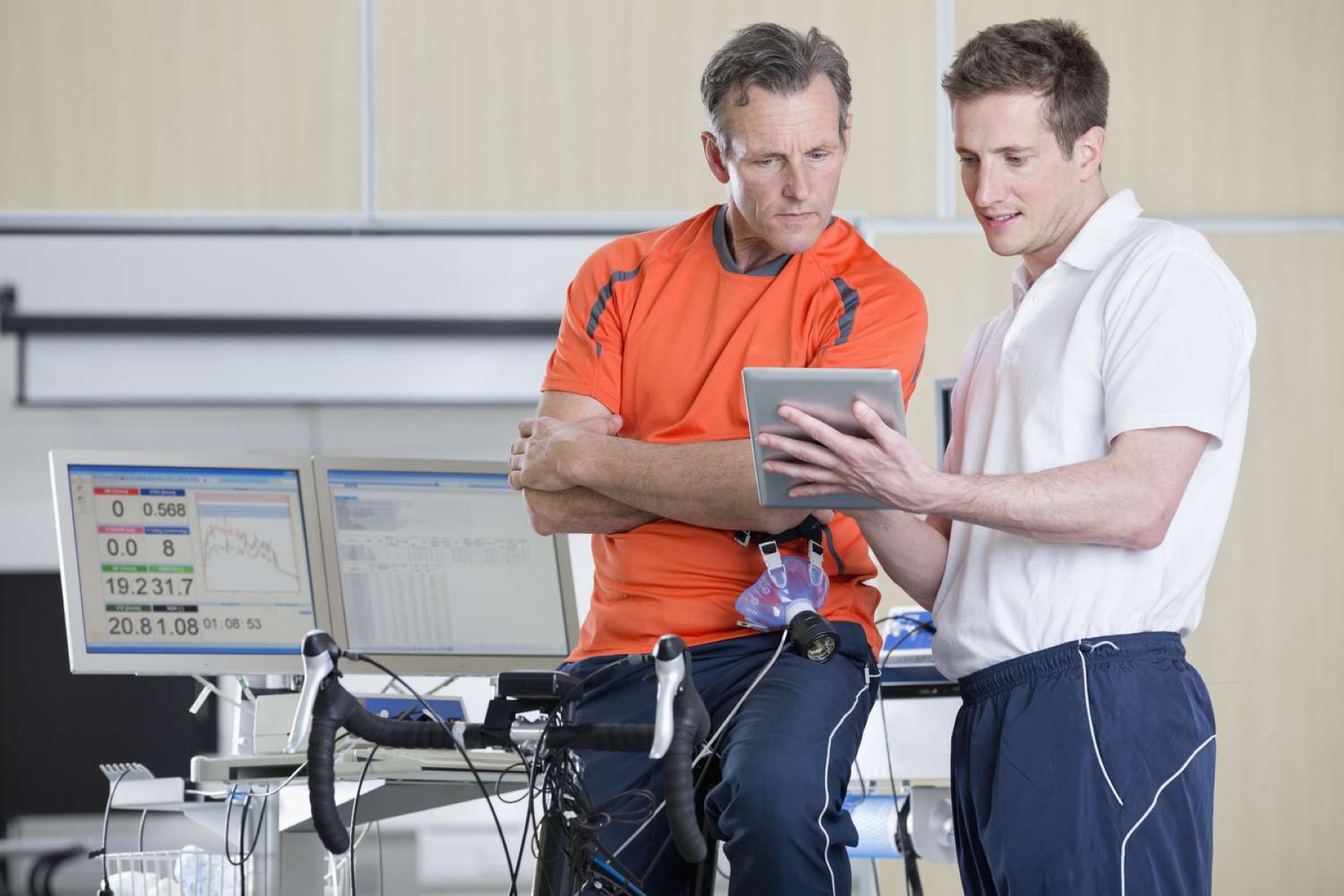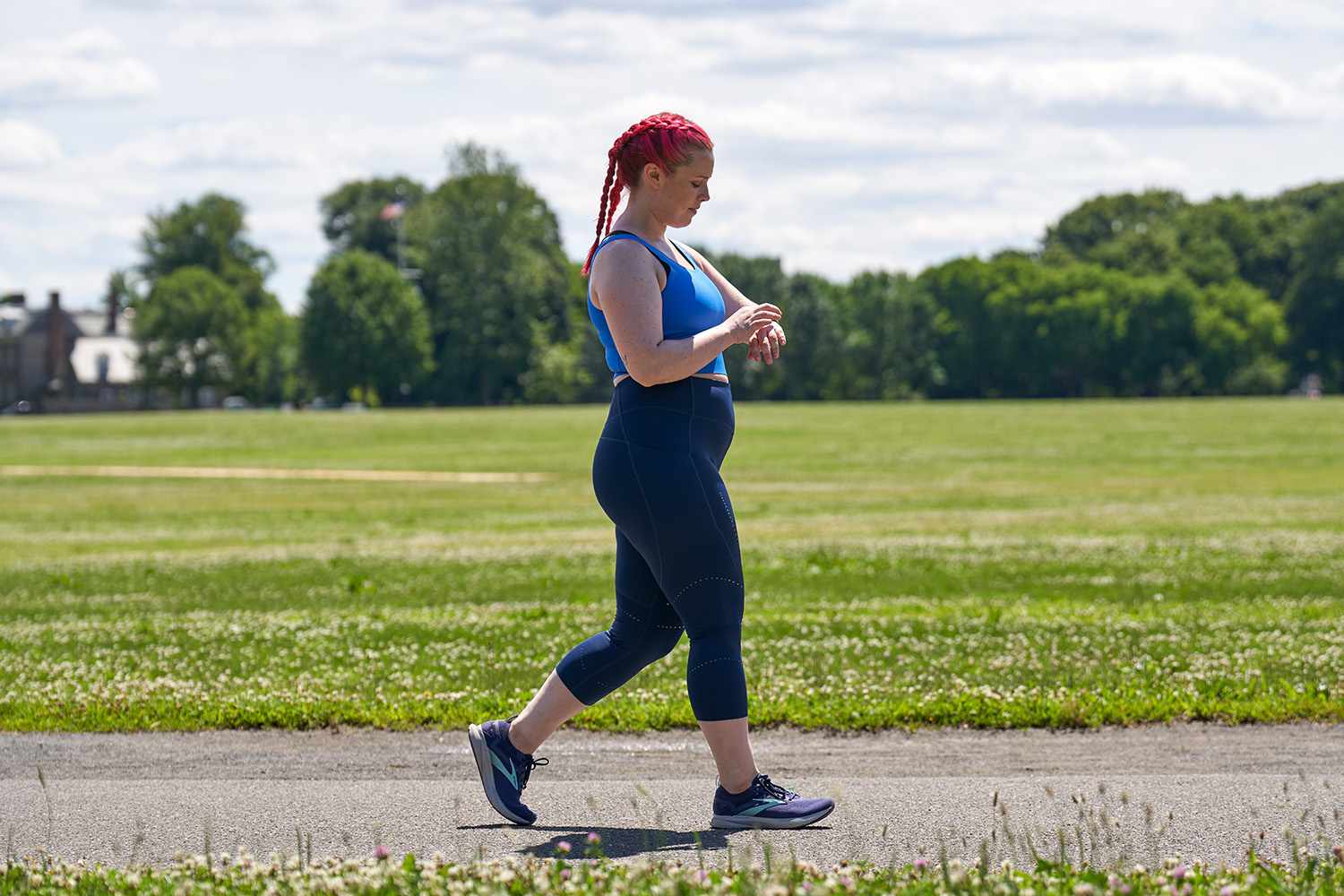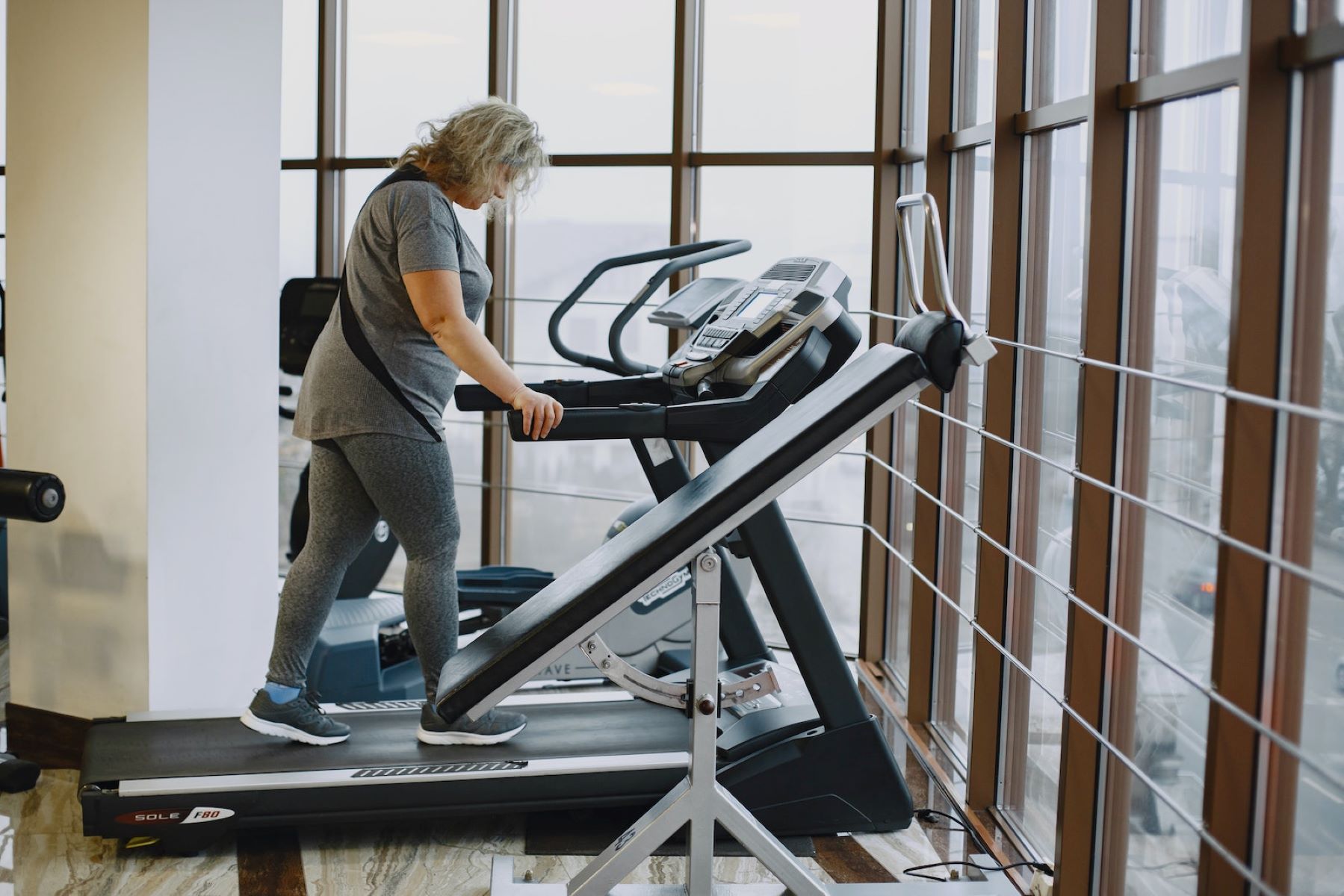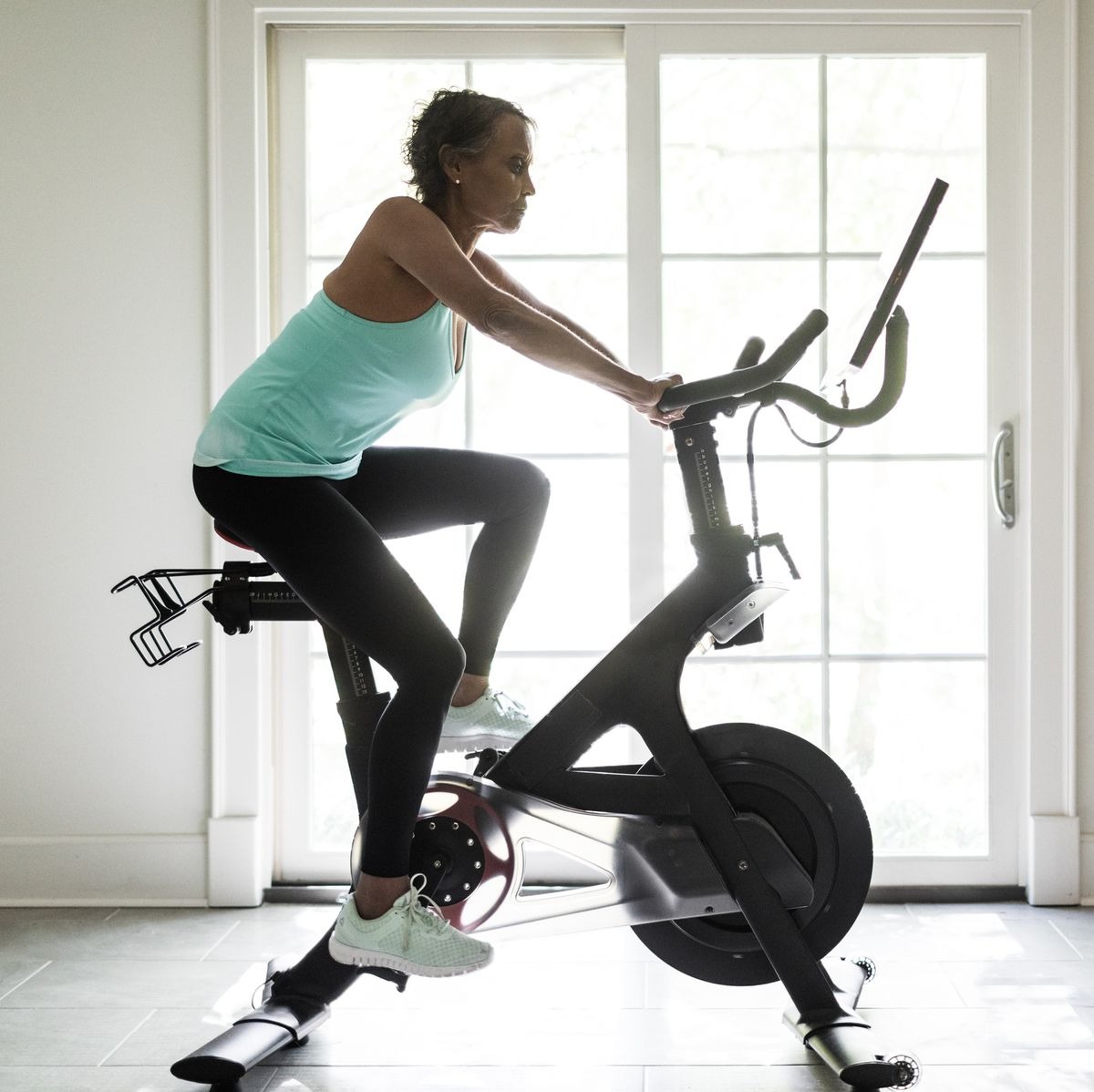Home>Misc>Featured>How To Exercise With Bad Knees To Lose Weight At Home
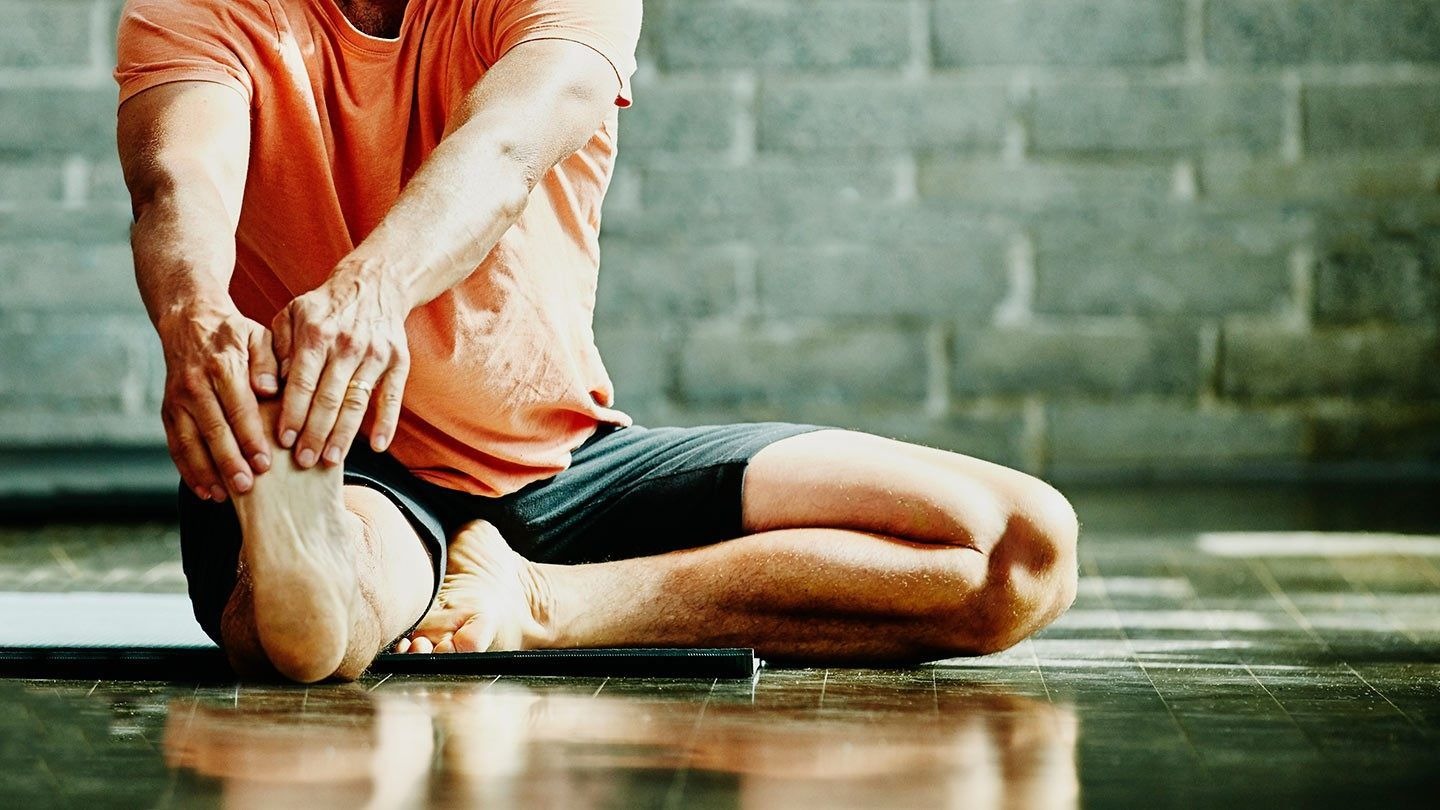

Featured
How To Exercise With Bad Knees To Lose Weight At Home
Published: September 25, 2023
Discover effective ways to exercise and shed pounds at home, even with bad knees. Get expert tips and guidance featured in this informative guide.
Introduction
Exercising with bad knees can be a challenging task, especially when your goal is to lose weight. However, it is not impossible. With the right knowledge, precautions, and exercise modifications, you can still achieve your weight loss goals from the comfort of your own home.
Bad knees can be caused by various factors such as injury, arthritis, or simply wear and tear over time. These conditions can make it difficult to engage in high-impact exercises that put strain on the knees. But that doesn’t mean you have to give up on your fitness journey. Regular exercise not only aids in weight loss but also helps strengthen the muscles around the knee joint, providing better support and potentially reducing pain.
Before starting any exercise program, it is important to consult with your healthcare professional or physical therapist to ensure that you are choosing the right exercises that suit your specific condition and level of fitness. They can provide guidance on which exercises are safe, how to perform them correctly, and offer modifications where needed.
In this article, we will explore the benefits of exercise for weight loss, as well as provide precautions and tips for exercising with bad knees. We will also discuss warm-up exercises, cardiovascular exercises, strength training exercises, and low-impact exercises that are suitable for individuals with bad knees. Additionally, we will provide a sample workout routine that you can follow to kickstart your weight loss journey.
Understanding Bad Knees and Exercise
Bad knees can be a result of various conditions, including injuries, arthritis, or general wear and tear. These conditions can make it challenging to engage in exercise, but it’s important to find ways to stay active for overall health and weight management. Understanding your specific knee condition can help you choose appropriate exercises and modifications that minimize strain and discomfort.
When it comes to bad knees, it’s crucial to focus on exercises that strengthen the muscles around the knee joint. Strong muscles provide better support and stability, reducing the pressure on the knee. Additionally, maintaining a healthy weight is essential since excess weight can place additional stress on the knees. Incorporating exercise into your routine can help you achieve weight loss and alleviate symptoms associated with bad knees.
However, not all exercises are suitable for individuals with bad knees. High-impact activities like running, jumping, and certain sports can put excessive strain on the knees, exacerbating pain or causing further damage. Instead, low-impact exercises and modifications to traditional exercises can be effective alternatives. These exercises are gentler on the joints while still providing cardiovascular benefits and strengthening the muscles.
It’s also crucial to listen to your body when exercising with bad knees. If an exercise causes pain or discomfort, it’s important to modify or avoid it altogether. Pushing through the pain can lead to more significant injuries and hinder your weight loss progress.
Before starting any exercise program, it’s recommended to consult with a healthcare professional or a physical therapist who can assess your knee condition and provide personalized guidance. They can offer insights into specific precautions, exercises to avoid, and modifications that cater to your needs.
In the next sections, we will explore the benefits of exercise for weight loss, as well as precautions and modifications you should consider when exercising with bad knees. We’ll also dive into specific warm-up exercises, cardiovascular exercises, strength training exercises, and low-impact exercises that can be incorporated into your routine.
Benefits of Exercise for Weight Loss
Exercise plays a crucial role in weight loss, regardless of whether you have bad knees or not. Engaging in regular physical activity can help you shed pounds, improve overall health, and boost your mood. Here are some of the key benefits of exercise for weight loss:
- Increased calorie burn: Exercise helps increase your metabolic rate, allowing you to burn more calories throughout the day. This calorie deficit is essential for weight loss.
- Muscle development: Strength training exercises, even with modifications for bad knees, can help build lean muscle mass. More muscle means a higher resting metabolic rate, which aids in weight loss.
- Improved cardiovascular health: Cardiovascular exercises, such as swimming or cycling, can help improve heart health, increase endurance, and burn calories.
- Better insulin sensitivity: Exercise can improve insulin sensitivity, allowing your body to use glucose more effectively. This can help prevent or manage conditions like diabetes.
- Increased energy levels: Regular exercise can boost energy levels and reduce fatigue, improving your ability to engage in daily activities and exercise for weight loss.
- Enhanced mood and mental well-being: Exercise releases endorphins, also known as “feel-good” hormones, which can reduce stress, anxiety, and symptoms of depression.
- Better sleep quality: Regular physical activity can improve sleep patterns, ensuring you get enough rest to support weight loss efforts and overall health.
Keep in mind that weight loss is not solely dependent on exercise. It should be combined with a healthy, balanced diet for optimal results. A combination of regular exercise, nutritious eating, and overall lifestyle modifications can lead to sustainable weight loss and improved overall well-being.
In the following sections, we will outline precautions and modifications to consider when exercising with bad knees. These guidelines will help you exercise safely while still reaping the many benefits of physical activity for weight loss.
Precautions for Exercising with Bad Knees
When you have bad knees, it’s important to take certain precautions to ensure that you exercise safely and minimize the risk of further injury or discomfort. Here are some precautions to consider:
- Consult with a healthcare professional: Before starting any exercise program, it’s crucial to consult with a healthcare professional or a physical therapist who can assess your knee condition and provide guidance tailored to your specific needs.
- Listen to your body: Pay attention to any pain or discomfort during exercise. If an exercise aggravates your knees, modify or avoid it. It’s essential to prioritize your safety and well-being.
- Start slowly: Begin with low-impact exercises and gradually increase intensity and duration over time. This allows your body to adapt and reduces the risk of overexertion or injury.
- Warm-up and cool-down: Prioritize warm-up exercises to prepare your muscles and joints for the upcoming activity. Afterward, cool down with stretching exercises to promote flexibility and reduce muscle soreness.
- Use proper form and technique: Ensuring proper form during exercises is crucial to avoid unnecessary strain on your knees. If needed, work with a fitness professional to learn the correct techniques.
- Engage in low-impact activities: Opt for exercises that are gentle on the joints, such as swimming, cycling, or using an elliptical machine. These activities provide cardiovascular benefits without placing excessive stress on the knees.
- Modify exercises: If a particular exercise causes discomfort, modify it to suit your needs. For example, replace high-impact exercises like jumping jacks with low-impact alternatives like step-ups or stationary cycling.
- Use appropriate equipment: When engaging in exercise, make sure you have the right equipment and footwear that provide proper support and cushioning for your knees.
- Take rest days: Allow your body to rest and recover. Overtraining can lead to further knee issues and hinder your progress. Incorporate rest days into your workout routine.
- Consider additional support: In some cases, wearing a knee brace or using supportive devices during exercise may be beneficial. Consult with your healthcare professional to determine if these aids are suitable for you.
By following these precautions, you can minimize the risk of aggravating your knees and exercise in a safe and effective manner. In the next sections, we will explore warm-up exercises, cardiovascular exercises, strength training exercises, and low-impact exercises specifically designed for individuals with bad knees.
Warm-Up Exercises for Bad Knees
Warm-up exercises are an essential part of any workout routine, particularly when you have bad knees. They help prepare your muscles, joints, and cardiovascular system for the upcoming physical activity, reducing the risk of injury and discomfort. Here are some warm-up exercises that are gentle on the knees:
- Joint rotations: Start by gently rotating your ankles, knees, and hips in a circular motion. This helps lubricate the joints and increase range of motion.
- Leg swings: Stand beside a wall or support and swing one leg forward and backward, keeping it straight. Repeat for 10 to 15 swings and then switch legs. This exercise helps warm up the hips and legs and improves flexibility.
- Knee extensions: Sit on a chair with your back straight. Extend one leg forward, holding it straight for a few seconds before lowering it back down. Repeat on the other leg. This exercise helps warm up the quadriceps muscles without putting excessive strain on the knees.
- Glute bridges: Lie on your back with knees bent and feet flat on the floor. Engage your glutes and lift your hips off the ground, forming a straight line from knees to shoulders. Hold for a few seconds and then lower back down. This exercise activates the glutes and core.
- Mini band walks: Place a mini resistance band just above your ankles. Stand with feet shoulder-width apart. Take small steps sideways while maintaining tension on the band. This exercise activates the hips and glutes, providing stability to the knees.
- Arm circles: Extend your arms out to the sides and make small circles with your hands. Gradually increase the size of the circles. This exercise helps warm up the shoulders and upper body.
Perform each warm-up exercise for 10 to 15 repetitions or as tolerated. Remember to move slowly and smoothly, focusing on proper form. Warm-up exercises should be done as a precursor to your main workout and can be modified to suit your specific needs and comfort level.
By incorporating these warm-up exercises into your routine, you can prepare your body for exercise while minimizing strain on your knees. In the next section, we will explore cardiovascular exercises that are safe and effective for weight loss with bad knees.
Cardiovascular Exercises for Weight Loss
Cardiovascular exercises, also known as aerobic exercises, are crucial for weight loss as they help burn calories and improve cardiovascular health. When you have bad knees, it’s essential to choose low-impact options that minimize stress on the joints. Here are some cardiovascular exercises that are gentle on the knees:
- Walking: Walking is a simple and effective way to get your heart rate up without putting excessive strain on your knees. Start with shorter distances and gradually increase your pace and duration as your fitness improves.
- Swimming: Swimming is a fantastic low-impact exercise that works the entire body. The buoyancy of water reduces the impact on the knees, making it an excellent choice for individuals with bad knees.
- Cycling: Whether it’s on a stationary bike or outdoors, cycling is an excellent cardiovascular exercise that is low impact. Adjust the resistance based on your fitness level and gradually increase the duration of your rides.
- Elliptical trainer: The elliptical trainer provides a low-impact, full-body cardiovascular workout. It mimics the motion of walking or running without the joint impact, making it ideal for individuals with bad knees.
- Rowing: Rowing is a great total-body workout that can be done indoors or on a rowing machine. It works the upper and lower body while being gentle on the knees.
- Low-impact aerobics: Low-impact aerobics classes or workout videos are designed to minimize stress on the joints. Look for classes or videos that specifically cater to individuals with bad knees.
When engaging in cardiovascular exercises, it’s important to start at a comfortable intensity and gradually increase the duration and intensity as your fitness improves. Aim for at least 150 minutes of moderate-intensity aerobic activity per week, or 75 minutes of vigorous-intensity activity if tolerated.
Remember, everyone’s fitness level and knee condition are different, so listen to your body and modify exercises as needed. If specific exercises cause pain or discomfort, consult with your healthcare professional or physical therapist to find suitable alternatives.
Incorporating cardiovascular exercises into your routine can help burn calories, improve heart health, and contribute to weight loss. In the next section, we will explore strength training exercises that can be done with bad knees to further support your weight loss goals.
Strength Training Exercises for Weight Loss
Strength training exercises are crucial for weight loss as they help increase muscle mass, boost metabolism, and improve overall strength and body composition. When you have bad knees, it’s important to choose exercises that target major muscle groups while minimizing stress on the knees. Here are some strength training exercises that are safe and effective for individuals with bad knees:
- Bodyweight squats: Stand with feet shoulder-width apart, lower into a squat position while keeping your knees aligned with your toes. Engage your glutes and core as you lower and rise back up. If needed, perform partial squats or use a chair for support.
- Modified lunges: Take a step forward with one leg and lower your body until the front knee is bent at a 90-degree angle. Avoid letting the knee go past the toes. If lunges are uncomfortable, try performing reverse lunges or using a stability ball against a wall for support.
- Wall sits: Stand with your back against a wall and slowly lower down into a sitting position. Hold this position for 30 seconds to 1 minute, focusing on engaging your quadriceps. This exercise helps strengthen the leg muscles without placing excessive strain on the knees.
- Stand-up sit-downs: Begin by sitting on a chair with feet flat on the floor. Stand up using only one leg, then slowly lower yourself back down. Repeat for the desired number of repetitions and switch legs. This exercise strengthens the lower body muscles while minimizing knee strain.
- Resistance band exercises: Incorporate resistance bands into your strength training routine to target various muscle groups. You can perform exercises such as bicep curls, tricep extensions, or seated rows with the resistance band to build strength without stressing the knees.
- Plank variations: Planks are excellent for core strengthening. Perform forearm planks or modified plank variations that keep the knees on the ground to reduce strain on the knees while still engaging the core muscles.
When performing strength training exercises, focus on maintaining proper form and using a weight or resistance level that challenges you without causing pain or discomfort. Start with lighter weights or resistance bands and gradually increase as your strength improves.
Remember to give your muscles time to rest and recover between strength training sessions. Aim for two to three days of strength training per week, alternating between different muscle groups to ensure overall muscle development.
By incorporating these strength training exercises into your routine, you can increase muscle mass, boost your metabolism, and enhance your overall weight loss progress. In the next section, we will explore low-impact exercises that are gentle on the knees but still effective for weight loss.
Low-Impact Exercises for Bad Knees
When you have bad knees, engaging in low-impact exercises is key to staying active while minimizing stress on the joints. These exercises are gentler on the knees compared to high-impact activities, making them ideal for individuals with knee pain or discomfort. Here are some low-impact exercises that are effective for weight loss:
- Swimming: Swimming is a fantastic low-impact exercise that provides a full-body workout. The water’s buoyancy supports your body weight, reducing stress on the knees while allowing you to engage in cardio and resistance training.
- Water aerobics: Water aerobics classes or exercises in a pool offer a low-impact yet effective workout. The water’s resistance helps strengthen muscles, improve cardiovascular fitness, and support weight loss.
- Stationary cycling: Cycling on a stationary bike is a great low-impact alternative to outdoor biking. Adjust the resistance to suit your fitness level and enjoy a cardiovascular workout without placing excessive strain on your knees.
- Yoga: Yoga can help improve flexibility, strength, and balance while being gentle on the knees. Look for yoga classes or online videos that focus on modifications for individuals with bad knees.
- Pilates: Pilates is a low-impact exercise method that focuses on core strength, flexibility, and posture. It can be done using specialized equipment or simply with a mat and bodyweight exercises.
- Elliptical trainer: The elliptical trainer provides a low-impact yet effective cardiovascular workout that mimics the motion of walking without the joint impact. It helps burn calories and improve cardiovascular fitness.
- Rowing machine: The rowing machine is a low-impact exercise that engages multiple muscle groups and provides a cardiovascular workout without placing stress on the knees. It’s an excellent option for full-body strengthening and calorie burning.
Remember that even with low-impact exercises, it’s crucial to listen to your body and adjust the intensity and duration based on your comfort level. Start slowly and gradually increase the challenge as your fitness improves.
Engaging in low-impact exercises not only supports weight loss but also helps improve overall fitness, flexibility, and joint health. Consult with a healthcare professional or a physical therapist for specific exercise recommendations and modifications based on your knee condition and fitness level.
In the next section, we will provide tips for exercising at home with bad knees, allowing you to create a safe and convenient workout environment.
Tips for Exercising at Home with Bad Knees
Exercising at home provides a convenient and comfortable environment, especially when you have bad knees. Here are some tips to help you exercise safely and effectively:
- Create a suitable workout space: Designate a specific area in your home for exercise. Clear out any obstructions and ensure you have enough space to move comfortably.
- Invest in appropriate equipment: Consider purchasing equipment that supports your knee health, such as a stationary bike, resistance bands, or a yoga mat. Having these resources readily available can make it easier to stay consistent with your workouts.
- Follow a structured routine: Create a weekly workout plan that includes a mix of cardiovascular exercises, strength training, and low-impact workouts. This provides variety and helps you achieve a well-rounded fitness regimen.
- Listen to your body: Pay attention to any discomfort or pain during exercise. Modify or avoid any exercises that cause knee pain or aggravate your condition. It’s crucial to prioritize your safety and well-being.
- Use online resources: Take advantage of online workout videos and fitness apps that offer modifications for individuals with bad knees. These resources can provide guidance and inspiration for your home workouts.
- Consider virtual classes or personal training: Join virtual exercise classes or work with a personal trainer who is knowledgeable about exercises for individuals with bad knees. This provides accountability and ensures you’re performing exercises correctly.
- Stay consistent: Consistency is key for achieving your fitness goals. Aim to exercise on a regular schedule, even if it means starting with shorter sessions and gradually increasing the duration over time.
- Include proper warm-up and cool-down: Prioritize warming up your muscles and joints with gentle movements before each workout. Similarly, cool down with stretching exercises to promote flexibility and reduce muscle soreness.
- Seek professional guidance: Consult with a healthcare professional or a physical therapist who can provide personalized advice and modifications based on your knee condition and fitness level.
Remember, exercising at home allows you to tailor your workouts to your specific needs and comfort level. Start with exercises that are suitable for your knees and gradually progress as your strength and endurance improve.
With dedication and the right precautions, you can achieve your weight loss goals while protecting your knee health. In the next section, we will provide a sample workout routine that incorporates exercises for individuals with bad knees.
Sample Workout Routine for Weight Loss with Bad Knees
Having a structured workout routine can help you stay on track with your weight loss goals, even with bad knees. Here’s a sample workout routine that incorporates a variety of exercises while being mindful of your knee health:
Warm-Up:
- 5 minutes of joint rotations to loosen up the ankles, knees, and hips.
- 10 leg swings on each leg to warm up the hips and improve flexibility.
- 10 knee extensions on each leg to engage the quadriceps without placing excessive strain on the knees.
Cardiovascular Exercise:
- 20 minutes of low-impact stationary cycling to get your heart rate up and burn calories.
- 10 minutes of swimming to engage the whole body and improve cardiovascular fitness.
Strength Training:
- 3 sets of 10 bodyweight squats to strengthen the lower body and stabilize the knee joints.
- 3 sets of 10 modified lunges on each leg to work the leg muscles without excess strain on the knees.
- 3 sets of 10 wall sits to engage the quadriceps and improve lower body strength.
- 3 sets of 10 resistance band bicep curls to target the arm muscles and improve overall strength.
Low-Impact Exercise:
- 10 minutes of gentle yoga or Pilates exercises to stretch and strengthen the muscles, improve flexibility, and promote relaxation.
- 10 minutes of water aerobics to engage various muscle groups while minimizing stress on the knees.
Cool-Down:
- 5 minutes of static stretching, focusing on the major muscle groups used during the workout.
Remember to adjust the intensity and duration of each exercise based on your fitness level and knee comfort. Start with lighter weights or resistance bands and gradually increase as your strength improves. If any exercise causes pain or discomfort, modify or avoid it altogether.
It’s essential to listen to your body and rest when needed. Allow at least one rest day between workouts to give your muscles time to recover. Always consult with a healthcare professional or a physical therapist if you have any concerns or questions about specific exercises or modifications.
By following this sample workout routine and making necessary adjustments for your knee condition, you can work towards your weight loss goals while promoting knee health. Remember to stay consistent, stay hydrated, and maintain a balanced diet to optimize your weight loss progress.
Conclusion
Exercising with bad knees doesn’t have to be a barrier to achieving your weight loss goals. By understanding your knee condition, taking precautions, and making modifications, you can engage in safe and effective workouts from the comfort of your own home. Regular exercise not only aids in weight loss but also strengthens the muscles around the knee joint, providing better support and potentially reducing pain.
Remember to consult with a healthcare professional or a physical therapist to ensure you choose exercises that are suitable for your specific knee condition and fitness level. They can provide personalized guidance, modifications, and precautions to help you exercise safely and effectively.
Incorporate warm-up exercises to prepare your muscles and joints, and prioritize low-impact cardiovascular exercises such as walking, swimming, cycling, or using an elliptical trainer. These activities help burn calories and improve your cardiovascular fitness while being gentle on the knees.
Strength training exercises, such as bodyweight squats, modified lunges, and resistance band exercises, help increase muscle mass, boost metabolism, and improve overall strength. Focus on maintaining proper form and using appropriate weights or resistance levels for your comfort and safety.
Additionally, low-impact exercises like yoga, Pilates, and water aerobics provide a full-body workout while minimizing strain on the knees. Modify exercises as needed and listen to your body to prevent pain or discomfort.
Exercising at home offers convenience, and by following a structured routine, incorporating suitable warm-up and cool-down exercises, and paying attention to your body’s needs, you can make consistent progress in your weight loss journey.
Remember, each individual is unique, and what works for others may not work for you. It’s crucial to listen to your body, make necessary modifications, and always prioritize safety and well-being. With dedication, perseverance, and the right approach to exercise, you can achieve your weight loss goals and improve your overall health and quality of life, despite having bad knees.




